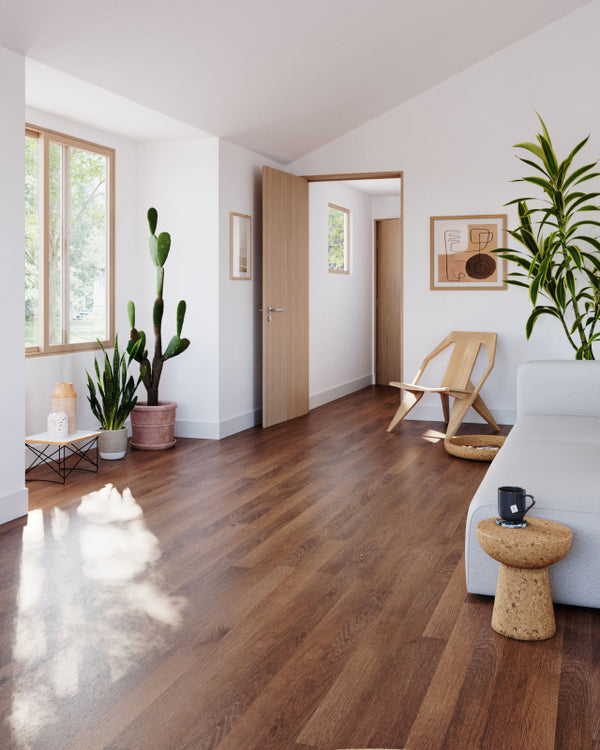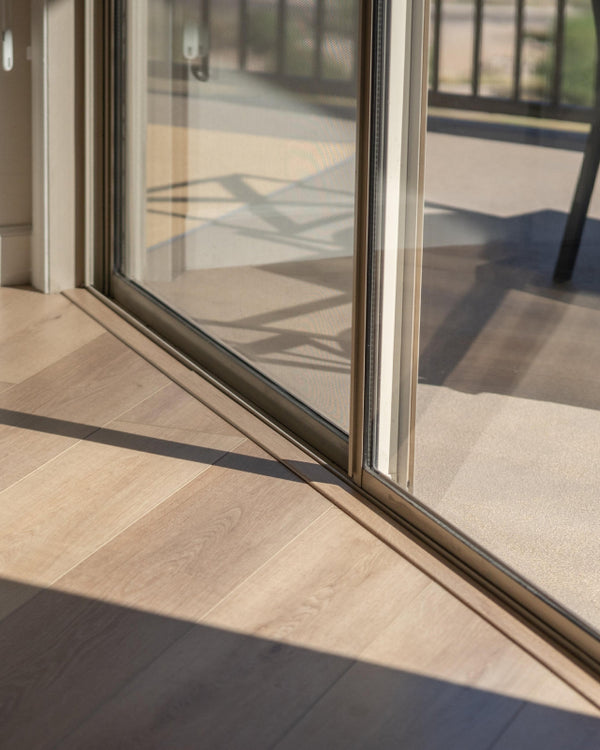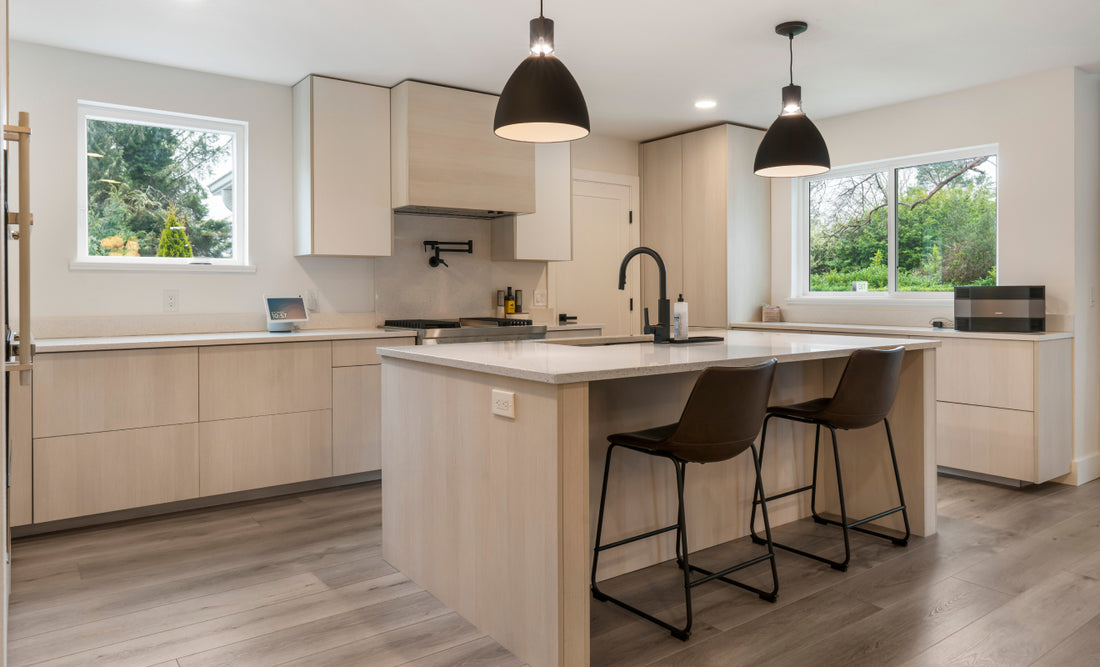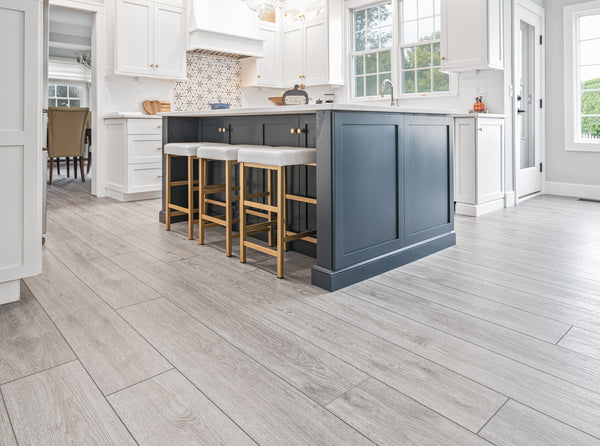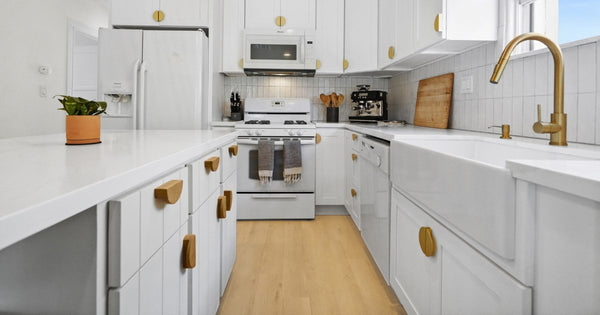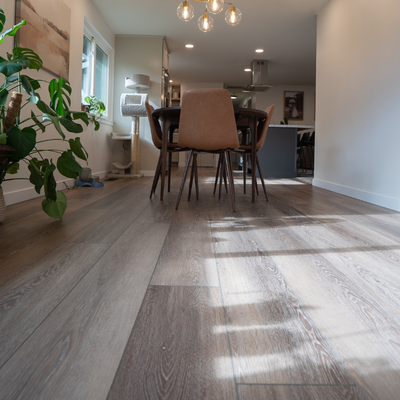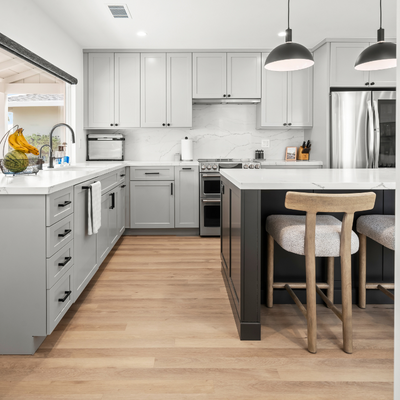When choosing the perfect flooring for your home, the decision between light and dark wood tones is a significant one. Each option brings its own unique charm and set of benefits, but how do you know which is the right fit for your space? Whether you’re looking to embrace current interior design trends, balance practicality, or cater to potential future buyers, this guide will help you decide between light or dark wood floors.
Interior Design Trends
Light wood floors have surged in popularity, aligning with the minimalist and Scandinavian design trends that favor airy, open spaces. These floors create a sense of lightness and spaciousness, making them perfect for smaller rooms or areas with limited natural light. On the other hand, dark wood floors exude elegance and richness, lending themselves well to more traditional or modern interiors. Darker tones are a staple in homes aiming for a dramatic or cozy aesthetic, especially when paired with contrasting light-colored walls and furnishings.
Practical Considerations
Practicality is another crucial factor in choosing between light and dark wood floors. Light wood tends to hide dust, scratches, and pet hair more effectively, making it a smart choice for busy households or homes with pets and young children. Conversely, dark wood floors, while striking, can show dust, footprints, and scratches more prominently. However, they are excellent at concealing stains and marks, especially if the wood has a varied grain pattern or matte finish.
Buyer Preferences and Resale Value
When it comes to resale value, both light and dark wood floors can appeal to potential buyers, but preferences often depend on regional trends and home styles. In general, light floors are favored in areas where modern or coastal styles are popular, while dark floors are preferred in more traditional or luxury markets. For homeowners looking to sell in the near future, it may be wise to consider the prevailing trends in your area and choose a flooring color that aligns with buyer expectations. Overall, the best thing you can do is invest in quality floors that will last for years to come. Well maintained floors that do not immediately need to be replaced will always be attractive to potential buyers.
The Case for Grey-Toned Floors
Grey-toned floors have emerged as a popular middle ground between light and dark wood flooring, offering a contemporary and versatile option that suits various interior styles. These floors range from light ash to deep charcoal, providing a neutral backdrop that complements both cool and warm color schemes. Grey floors are excellent for creating a modern, clean look while adding a touch of sophistication. They also do a great job of hiding dust and imperfections, like light floors, but with a more distinctive, on-trend appeal. However, they may not be as timeless as traditional wood tones, which could affect their appeal to some future buyers. Still, if you're looking for a unique, stylish option that remains adaptable to changing decor trends, grey-toned floors are worth considering.
Making the Right Choice
Ultimately, the decision between light and dark wood floors should be guided by your personal style, the specific needs of your household, and your home's architectural elements. Consider the amount of natural light in your space, your preferred aesthetic, and the practical requirements of your lifestyle. Remember, there is no one-size-fits-all answer—each option has its unique appeal, and the right choice will enhance your home’s beauty and functionality.
Choosing between light or dark wood floors is a significant decision that can transform the look and feel of your home. Weighing the pros and cons, alongside your design goals and lifestyle needs, will ensure you make the best choice for your space. Always start by ordering a few samples of the colors you’re interested in so you can see how each might impact your space.
